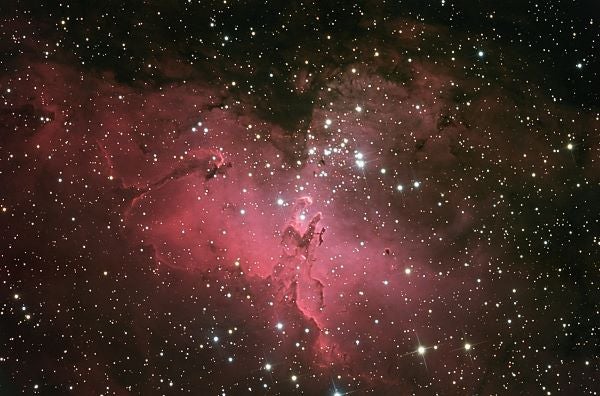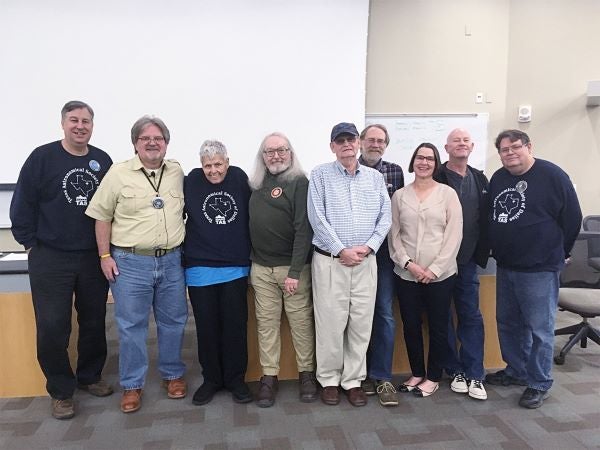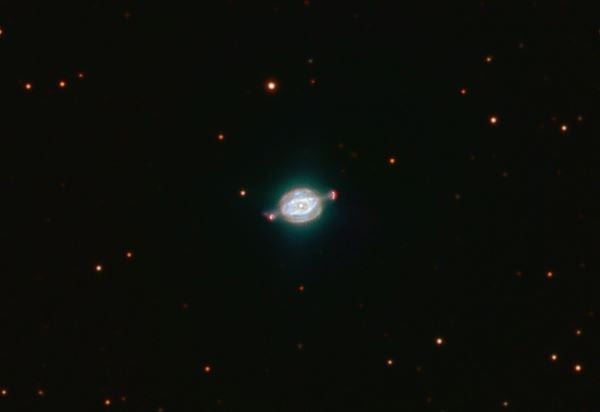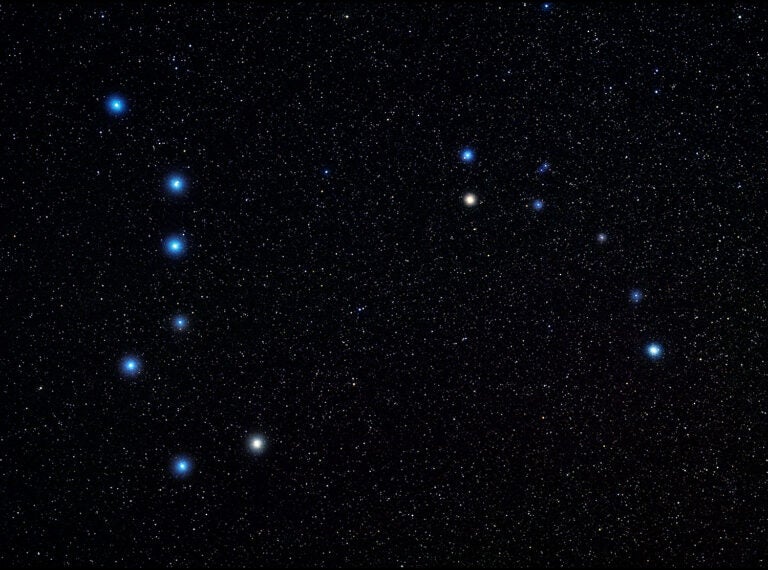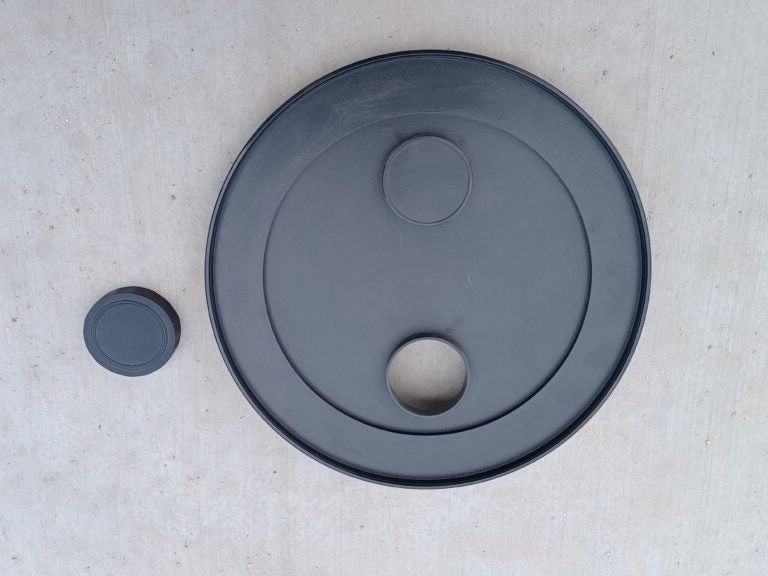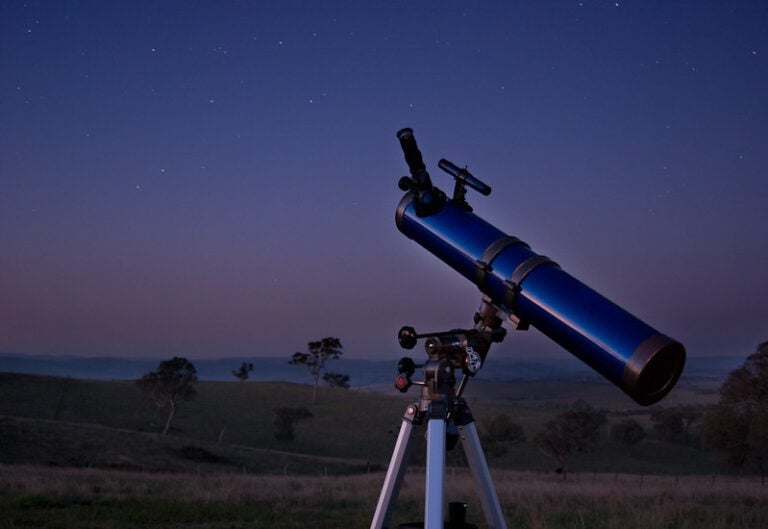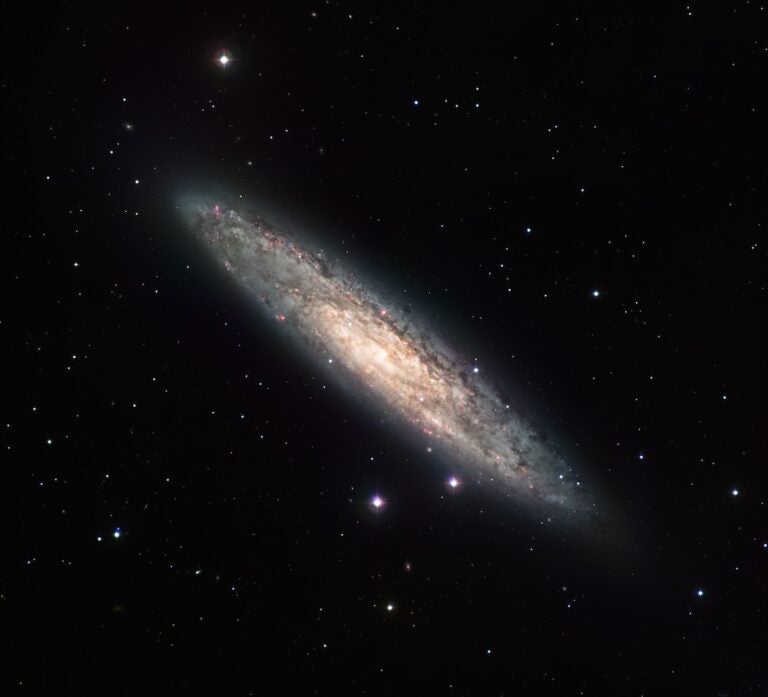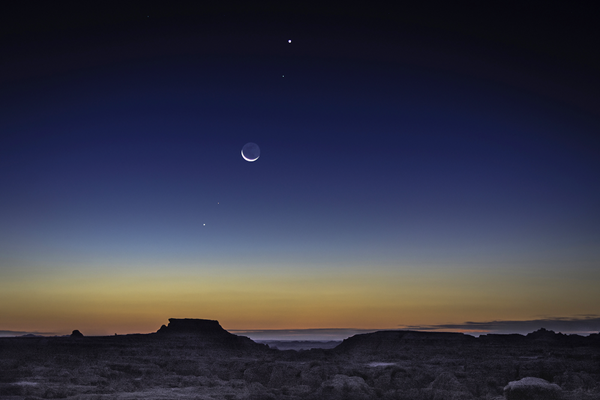Because New Moon occurs October 16 this year, I’ve made adjustments to the original list, as five objects will be too low to see well: M3, M53, NGC 3242, NGC 4699, and NGC 4725. For the 2020 Ghost Hunt, these have been replaced with M10, M12, NGC 1931, NGC 4656, and NGC 6426. The 2020 Ghost Hunt list, presented in order of right ascension, can be viewed online at www.Astronomy.com/Ghost2020.
Texas stargazing
Last October 26, Lloyd Lashbrook and some 25 members of the Texas Astronomical Society of Dallas drove to their dark site in southern Oklahoma with 15 telescopes to conduct what he “hoped to be the first of many Ghost Hunts.” Lashbrook said the evening, which included a fall picnic, was a great success. The competition was four categories: manual telescope, electronically aided scope, binoculars, and astrophotography.
The winners in each category (who saw or imaged the most objects) received a special gold or silver Ghost Hunt medal. John Wagoner won the gold medal in the manual telescope and binocular categories, Larry Ammann took the gold medal in astrophotography, and Les Matyas was the winner in the “aided telescope” category, as he used an electronically aided telescope to capture 30-second exposures of 82 Ghost Hunt objects — more than anyone else. “I never dreamed that someone would do that,” Lashbrook says.
“While no one got through the entire list,” Lashbrook says, “we had a great time. Several new members learned about the sky and observing it. Now they have become regular members of our club.”
Busting the ghosts
One benefit of the society’s first Ghost Hunt is that they came up with a plan of attack to help participants search efficiently and rapidly. Last year, Lashbrook also suggested substitutes for four objects that beginners may find too difficult to detect. I noted these in parentheses with an asterisk in the “Facing south” group below. Here is the group’s breakdown for attacking the 2020 Ghost Hunt. Observers should start with the first object listed, then move to the next. All times are local.
Facing west
7:30–8:30 p.m.: M17, M16, M10, M12, M51
8:30–9 p.m.: M101, NGC 6572, NGC 6426, NGC 6633, IC 4756, M26, NGC 6712, M13, NGC 6709, M71, M27, M56, M57, M92, M72
9–10 p.m.: NGC 7009, NGC 6934, NGC 7006, NGC 6940, NGC 6888, NGC 6826, NGC 6543
10–11 p.m.: NGC 7293, M2, M15, NGC 6992/95, NGC 6960, NGC 6866, NGC 6819, Northern Coalsack, NGC 7000
11 p.m.–12 a.m.: IC 5146, NGC 7008, NGC 7331, NGC 7662, NGC 7789, M52, NGC 7023
Facing south
12–1 a.m.: NGC 246, M74, M33, NGC 404, M31, M32, NGC 205, NGC 185, NGC 147, NGC 281, NGC 457, NGC 663, NGC 559
1:30–2:30 a.m.: NGC 869/884, M76, NGC 752, NGC 891, M34, NGC 1023, NGC 1535, M45, NGC 1333, NGC 1528, NGC 1545, NGC 1501, IC 342, NGC 188, NGC 40, NGC 1360
2:30–3:30 a.m.: M79, NGC 1999, M42, M43, NGC 1973/5/7 (*NGC 2017), NGC 2024 (*NGC 1662), M78, NGC 1647, NGC 2163 (*NGC 2169), M1, NGC 2175 (*NGC 2395), M35, IC 405, NGC 1931
Facing east
3:30–4:30 a.m.: M41, NGC 2301, NGC 2237-9, NGC 2261, NGC 2392, M44, NGC 2683, NGC 2419, NGC 2841, M81, M82, M97, M108
4:30 a.m.–End: NGC 2467, NGC 2440, NGC 2903, NGC 4236, NGC 4449, NGC 4631, NGC 4656, Melotte 111, NGC 4565, NGC 3628
Future plans
“Now that we have had the first Ghost Hunt,” Lashbrook says, “enthusiasm runs high in the club” for this month’s — whether it’s solitary, virtual, or social.
The society also plans to hold a Ghost Hunt at the Palo Pinto Star Party on Saturday, October 3. It will be a forerunner to the main event and will include the Fort Worth Astronomical Society. “We will just keep pushing until this thing starts rolling on its own,” Lashbrook says.
And remember, you’ll find a list of targets updated for 2020 online at www.Astronomy.com/Ghost2020. As always, send your thoughts and observations to sjomeara31@gmail.com. I’d really like to know how many Ghost Hunt targets you saw.

